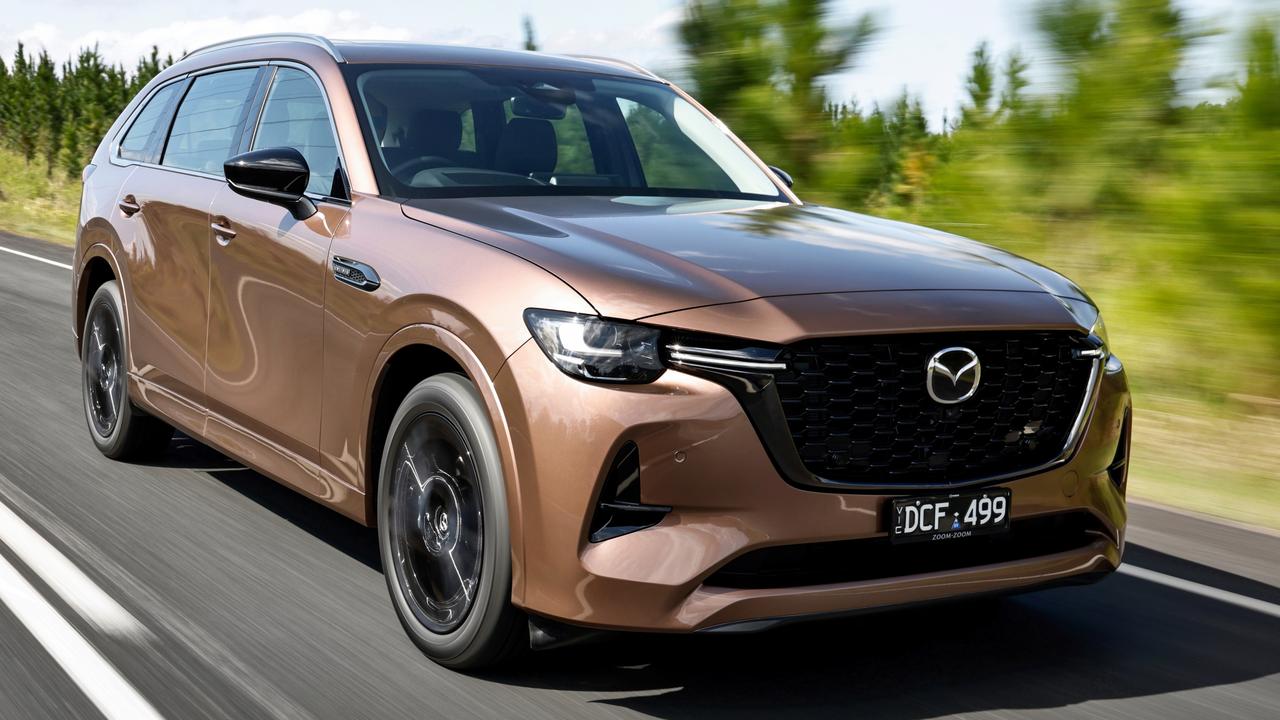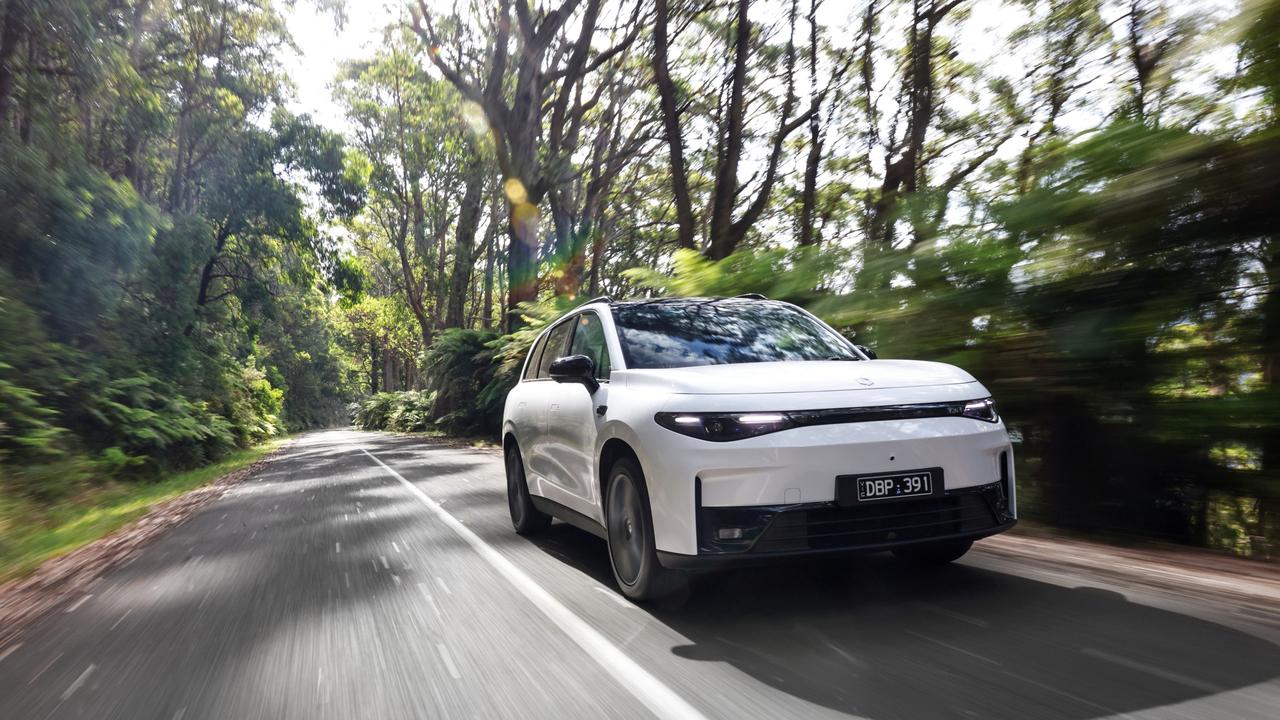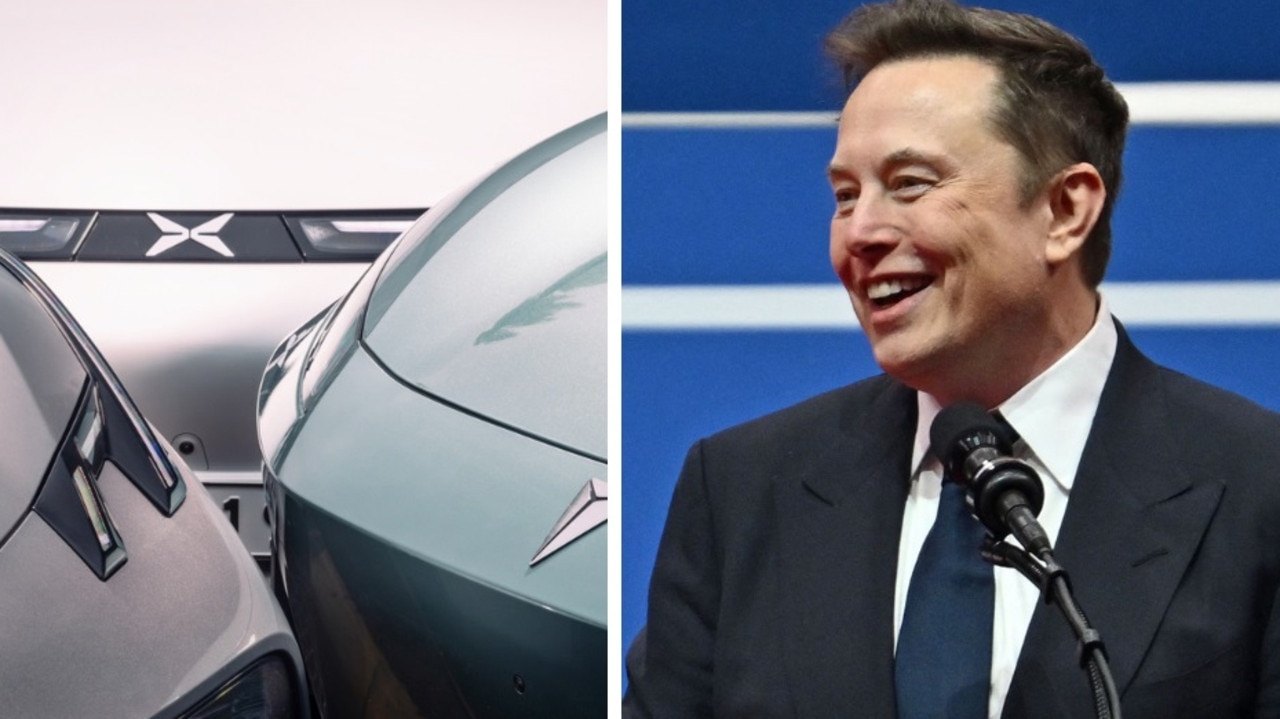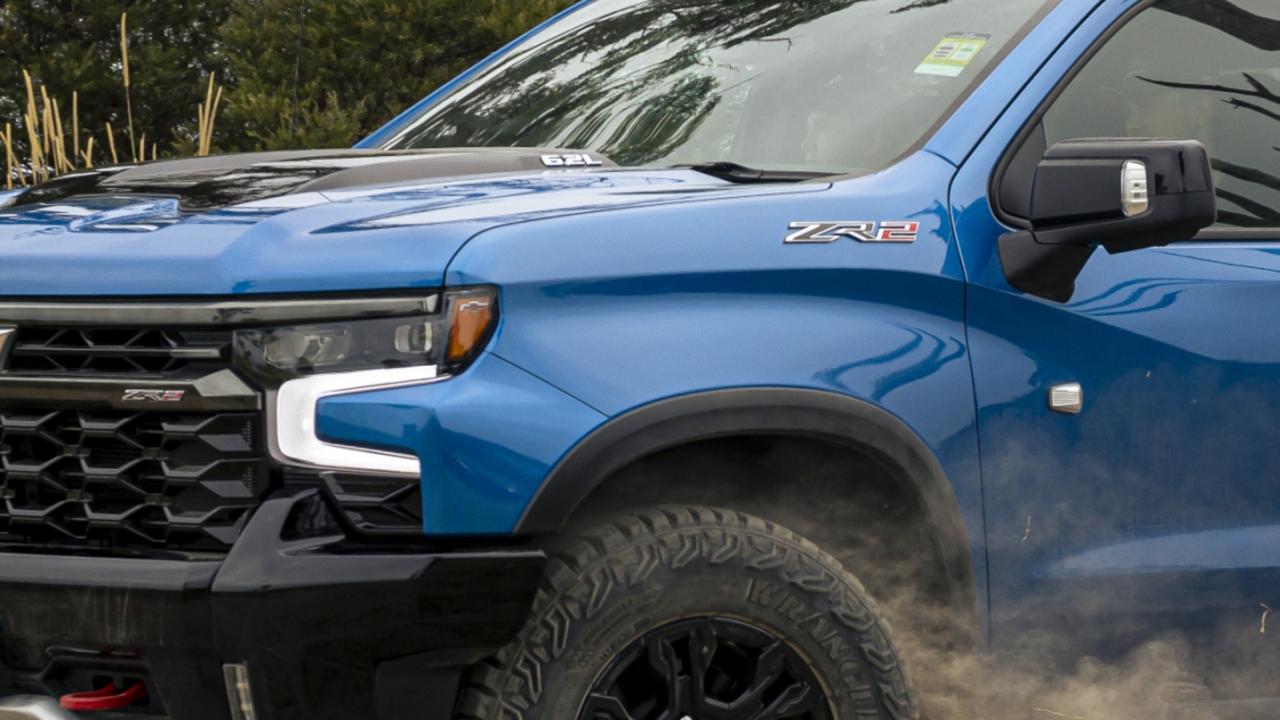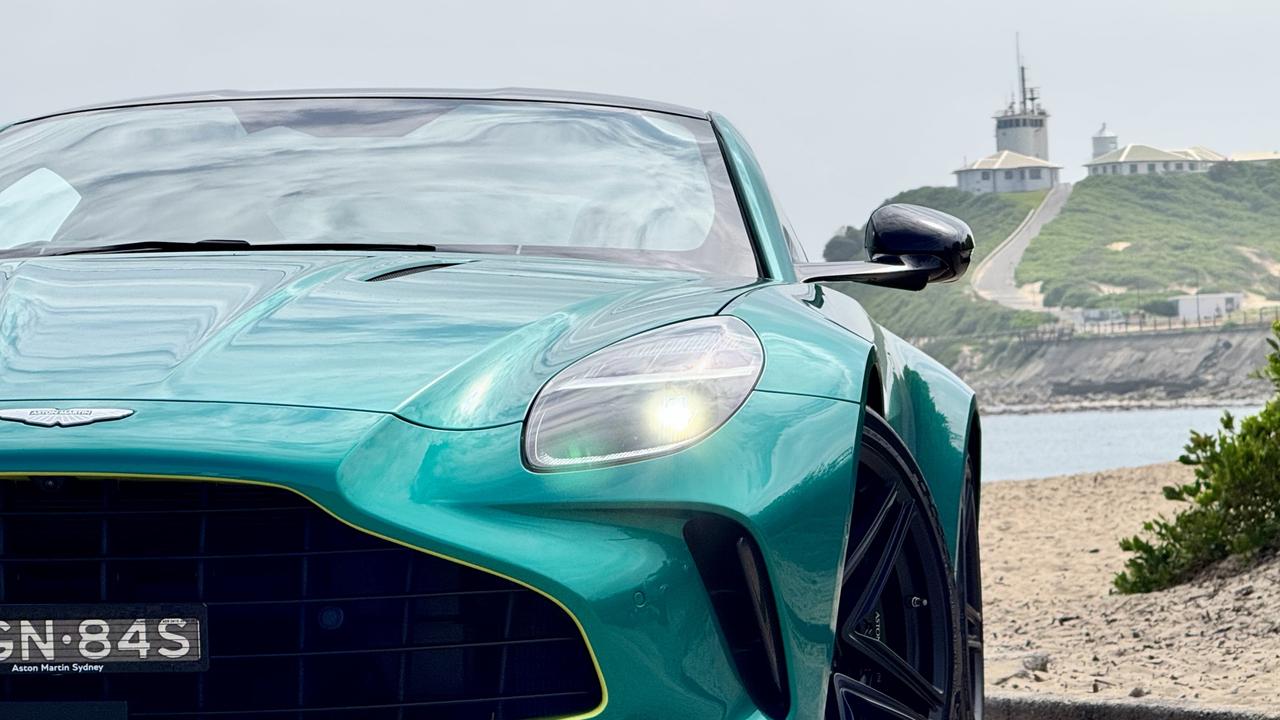2021 Kia Niro Electric review: Ageing EV finally arrives in Australia
The South Korean brand’s small electric SUV has been on sale overseas for years, and it has finally arrived Down Under. We find out if it was worth the wait.
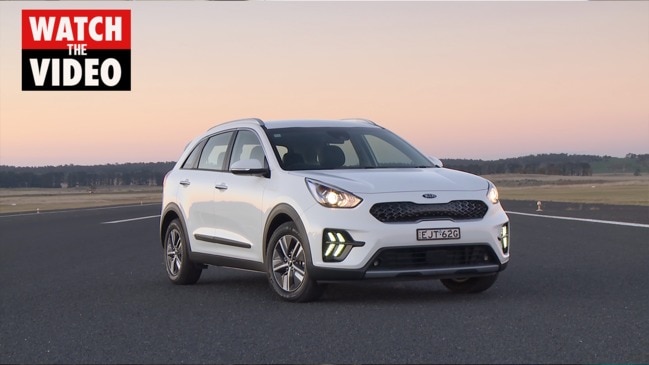
New Cars
Don't miss out on the headlines from New Cars. Followed categories will be added to My News.
Kia’s newest model is already three years old. Presented to the world in 2018, the electric Niro represents a change of heart from a manufacturer that previously declared the eco-conscious crossover off-limits.
We originally drove the SUV overseas, where executives said the car would only be offered in markets with carbon emissions restrictions. Kia’s European arm needed every e-Niro it could find to offset sales of conventional petrol and diesel models, so the car was not sold in Australia.
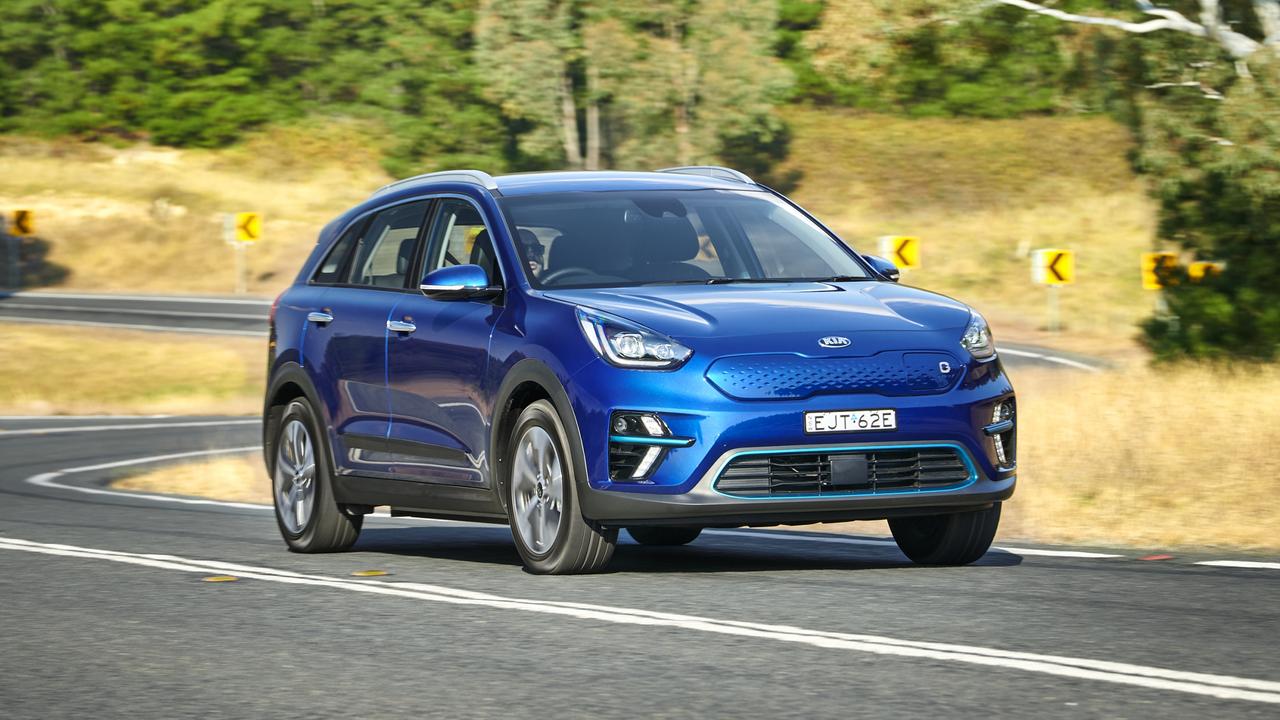
Now the brand recognises it needs to get a foothold in the small but growing electric vehicle segment. It helps that the Niro is due to be replaced soon, and international demand has waned in the face of competition.
The new machine will be an odd duck in Kia showrooms – partly because it represents the brand’s first electric car, but also because it looks and feels dated. It has plain styling instead of the crisp lines of the latest Cerato small car or electric Kia EV6 due next year, and lacks the digital dashboard of modern Kias – or its cousin, the Hyundai Kona.
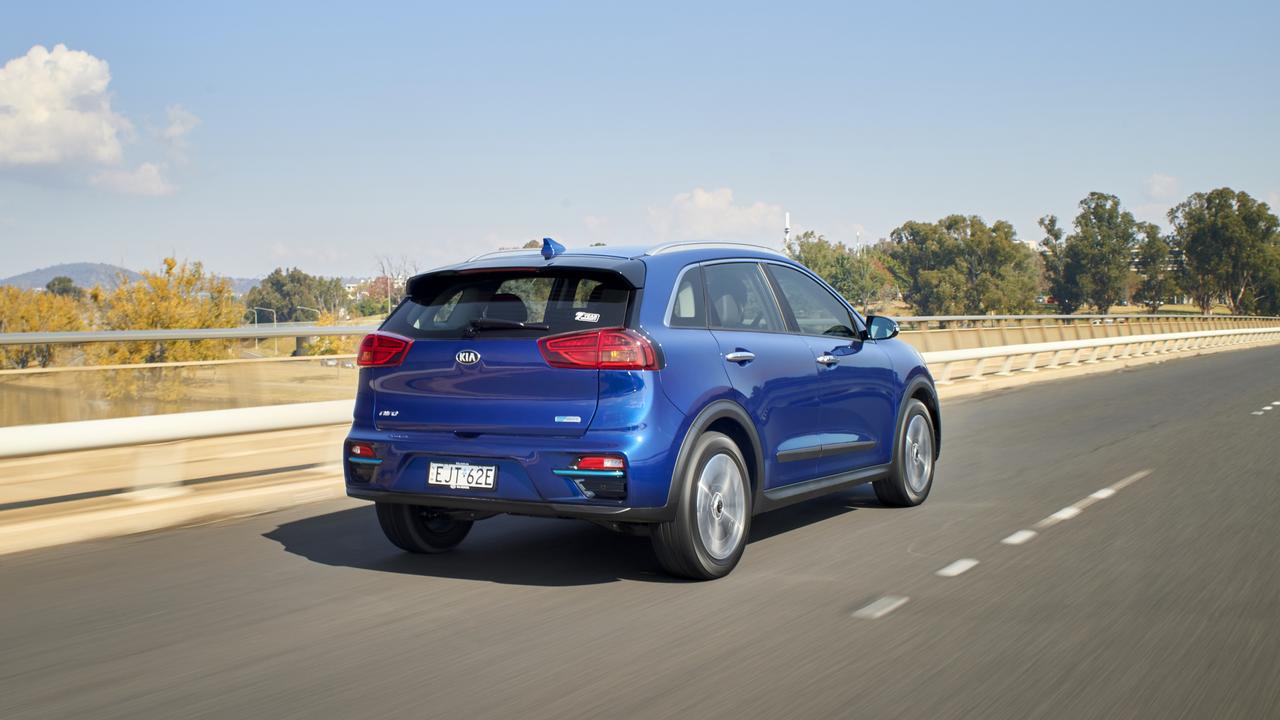
The indicator stalk is on the wrong side, and it misses out on Kia’s latest badge and logos.
The Niro is also available with a choice of three drivelines.
An entry-level hybrid priced from $41,990 drive-away combines a 1.6-litre, 77kW/147Nm petrol engine with a 32kW/170Nm electric motor and 1.56kWh battery. Customers with $49,990 to spend can step up to a plug-in hybrid blending the same petrol engine with a 44.5kW/170Nm motor and 8.9kWh battery delivering 58km of electric range.
We focused on the electric halo model priced from $67,990 drive-away.
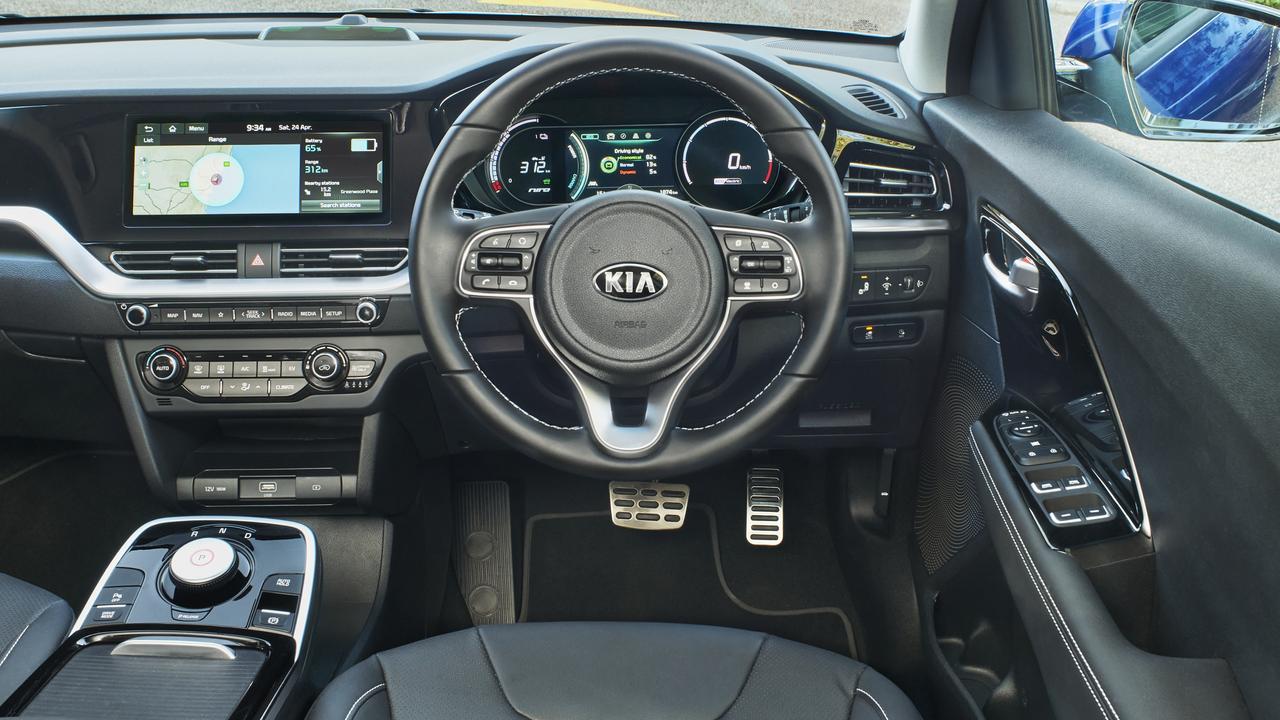
At that figure, the Niro’s standard equipment doesn’t quite gel with its cost.
Customers normally get loads of equipment in a big-buck Kia, but the Niro’s dollars go toward its electric hardware.
Owners get old-school halogen headlights, 17-inch alloys, partial leather trim, dual zone climate control and an unimpressive 8-inch touchscreen with wireless Apple CarPlay and Android Auto as standard.
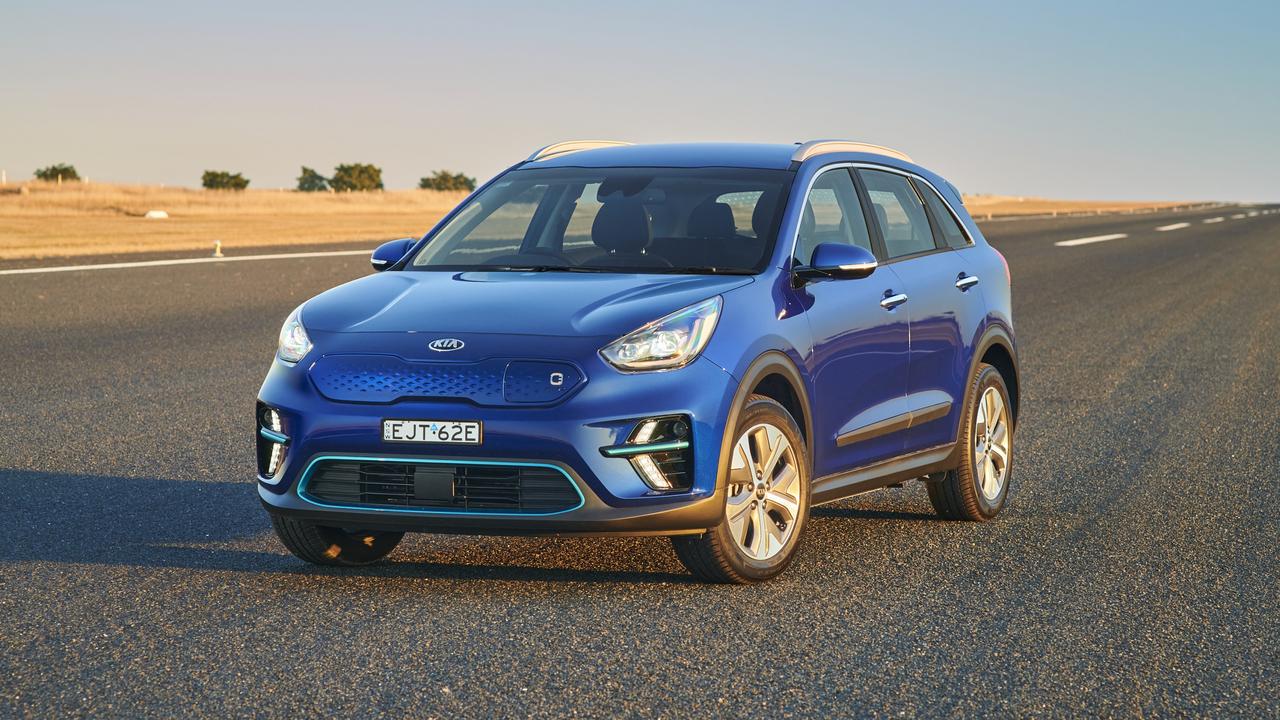
Safety gear includes seven airbags, auto emergency braking with pedestrian and cyclist detection, active cruise control and lane keeping assistance – but not blind spot monitoring or rear cross traffic alerts, which are only on a sport model priced $3400 upstream.
Niro Sport customers also get faux leather, LED lights, a 10.25-inch touchscreen with a JBL stereo and sat nav (but not wireless CarPlay).
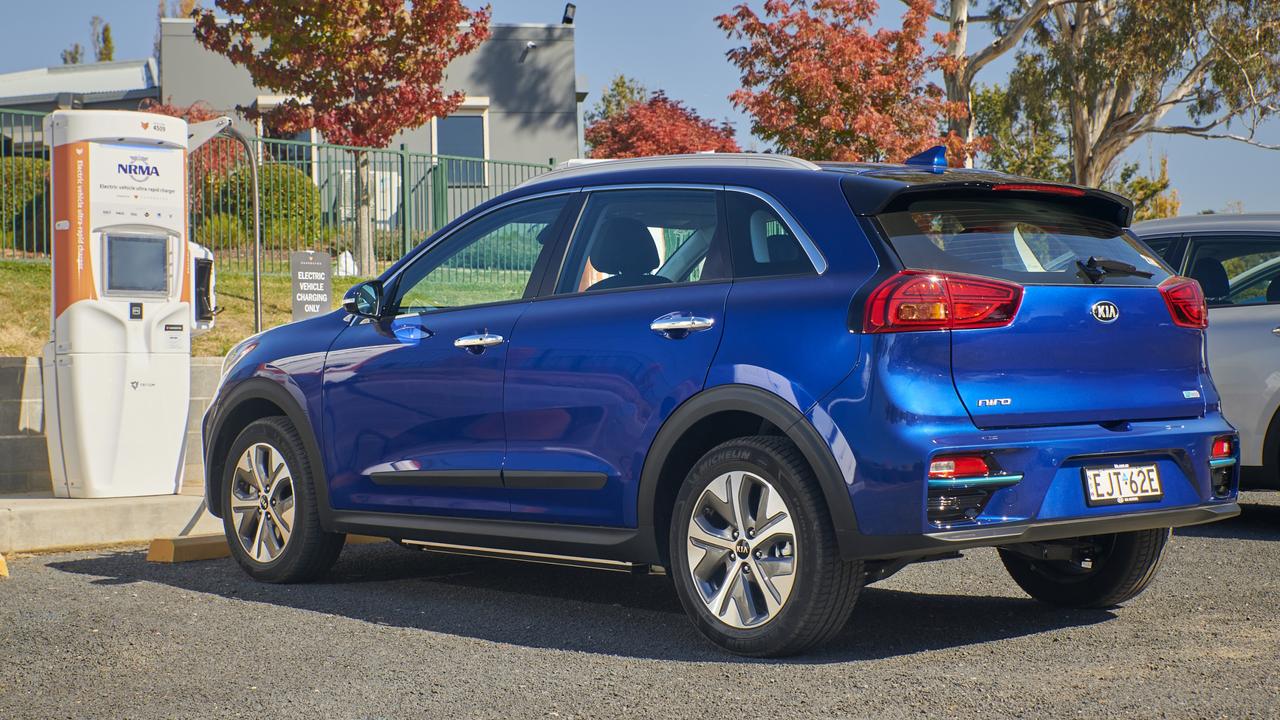
Either way, the Niro is powered by the same 150kW/395Nm electric motor and 64kW lithium-ion battery pack as the Hyundai Kona Electric first sold here in 2019.
The combination is good for a claimed 455 kilometres of range, and a long test drive revealed Kia is true to its word, offering plenty of range to spare.
Kia says the model needs 29 hours to charge from zero to 100 per cent on a home outlet, or 9 hours and 35 minutes to get the same done using a 7.2kW AC wall box fitted at home. Charging from zero to 80 per cent at 50kW DC public chargers takes 1 hour and 15 minutes, which drops to 54 minutes at 100kW fast-charging sites.
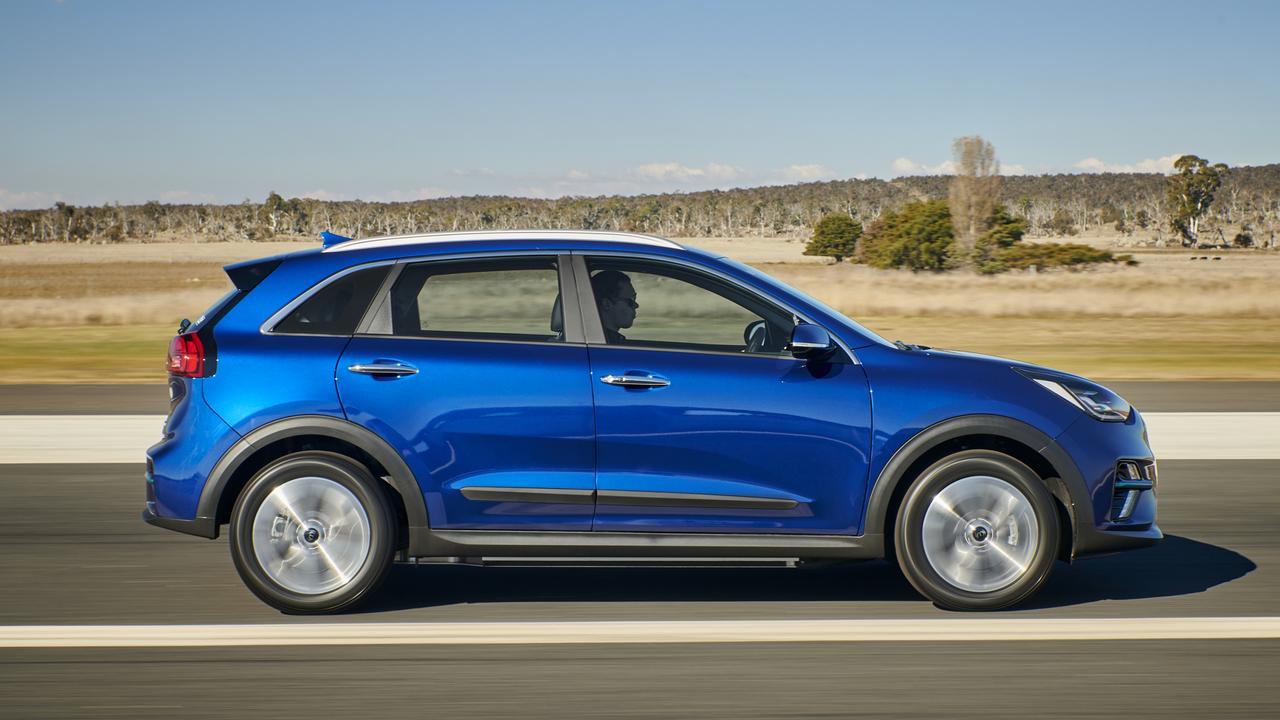
That sounds OK until you consider that next year’s Kia EV6 needs just 18 minutes to charge from 10 to 80 per cent at high-voltage sites.
The Niro feels punchy on the road, with effortless shove from its near-silent electric motor. Wind and road noise is well-suppressed, and quality Michelin tyres offer surprising grip when cornering.
Its ride is more accommodating than most modern Kias, taking a softly-suspended approach with more body roll than similar-sized cars such as the Seltos or Sportage.
That’s because the Niro’s suspension has not been finetuned for Australian conditions, unlike the majority of models found in Kia showrooms.
Which contributes to a sense the Niro is a niche model that falls short of Kia’s best efforts in 2021. Likely to be sold in small numbers to fleets and green enthusiasts, the Niro paves the way for better electric cars around the corner.
VERDICT 3/5
Practical and fun to drive, Kia’s electric car was a class leader in 2018. But its delayed introduction should encourage customers to wait for an update – or the new EV6 next year.
KIA NIRO ELECTRIC VITALS
Price: From $70,990 drive-away
Engine: Electric motor, 150kW/395Nm
Warranty/Service: 7-year/150,000km, $2,800 for 7 years
Safety: Not rated, 7 airbags, auto emergency braking, active cruise control, lane keeping assistance, blind spot monitoring, rear cross traffic alert
Thirst: 64kWh battery, about 15kWh/100km
Spare: Repair kit
Boot: 451 litres
Originally published as 2021 Kia Niro Electric review: Ageing EV finally arrives in Australia



